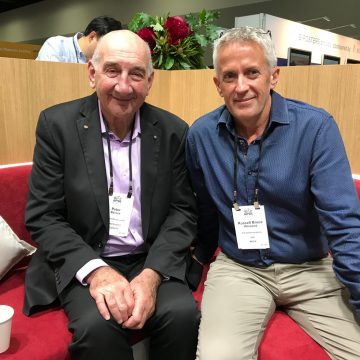Patients and healthcare professionals working collaboratively for positive outcomes are always going to provide better outcomes than a solution with a narrow band width. We are seeing patient advocates becoming more involved in the decision-making process of disease management which can only be positive. But are all patient partnerships for the good of patients?



Healthcare professionals are bound by ethical standards which for the most part see a good working relationship between them and their patients. There are exceptions, as with many things in life, I have personally experienced a healthcare professional stepping outside these standards for their own interests.
So, what of commercial companies operating in the respiratory space? Are they held to the same account? I have had several relationships with commercial companies in the respiratory space, some good, some bad and some downright ugly! My point of this article is not to call out those at fault, but to outline the importance of these commercial relationships and why they should be held to the same standard as healthcare professionals.
My own perspective in having commercial relationships are three-fold – to advocate, to decision make and to hold to account.
To advocate – is creating awareness for my particular disease, our plight, what we need, what we don’t have. To advocate includes events I do, fundraising and the lifestyle choices I advocate which work for me.
To decision make – having a seat at the table of a commercial company, a charitable organisation or a government run program means an opportunity to have some influence. As patients we have the “lived” experience which cannot be learnt. No amount of RCT’s (randomized controlled trials) or clinical practice can replace a patient’s experience with living with their disease. This experience can give valuable insight into the direction and application of current and future treatments and devices.
To hold to account – sadly, in the world we live in not everyone has a patient’s best outcomes at heart. Sometimes the commercial reality is considered more important than a patient’s reality. How a product is marketed can sometimes be misleading. Whether this is intentional or not is of little relevance, these situations need to be addressed and sometimes it takes a patient to draw the line in the sand.
I have been witness to appalling behaviour, from companies promising support for a patients initiative in exchange for their input, only to retract the promised support once the input has been given. I have seen and been victim of bullying by a healthcare professional.
I have also seen dedication and care at the highest level. This was no more evident than two years ago when I sat in a restaurant having lunch with representatives of a respiratory device company. One of the representatives went silent and had a tear in their eye as they looked at a patient using one of their companies’ devices.
This person was amongst a crowd of people moving through the city we were in. The device they were using was life changing and allowed this patient the freedom that patients before them would never have had. The conversation at the table then turned to what a wonderful experience it was to see the real-life application of this device. The conversation was genuine, heartfelt and evidence of a dedication to improve patient outcomes.
I have been fortunate to have been supported by organisations who are fully invested in improving quality of life for respiratory patients. Without their help my advocacy work through my events, my COPD Athlete website and COPD Wellness podcasts would not have been possible. These partnerships make a difference!
Commercial companies can wield influence with healthcare professionals, government organisations and patients. They invest large amounts of money which is greatly appreciated. They are also dealing with patients lives, this alone should be enough to expect they operate to the same standards expected of our healthcare professionals.
In my own country we are still learning how to get the most out of a patient experience and how this experience can be used to improve outcomes. I’m heartened to see private and government organisations moving in the direction of patient partnerships/advocacy and being prepared to invest in these partnerships.
Respiratory disease has immense struggles in terms of recognition, funding and solutions. Patients, healthcare professionals and commercial companies coming together and collaborating for the benefit of respiratory patients will lessen the struggle. When considering the future direction of your organisation never underestimate the power of patient input.
Have you been in contact with anyone who’s doing research on COPD that does not only involve “improving lifestyle in patients with COPD”? I’m talking about working for a cure. I tried to contact some researchers from the University of Melbourne that were involved in a study that found the potential to stop COPD by blocking a critical protein known as G-CSF. I’ve inquired about the progress of a clinical trial but have not heard back.
My case study which has just been published shows how ketogenic diet suppresses G-CSF. I have emailed the same study group but had no response. https://doi.org/10.3389/fmed.2021.699427